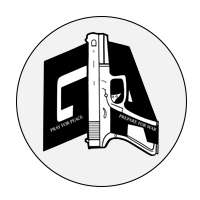Have you ever wondered about the best way to address the critical issue of teaching kids the dangers of misusing firearms? Navigating this topic can be daunting, but it’s possible to approach it with clarity and empathy. After all, ensuring children’s safety around firearms is a life-and-death matter that requires trust, patience, and the right resources.

Why It’s Important to Educate Kids About Firearm Safety
Teaching kids about the dangers of misusing firearms isn’t just a good idea; it’s essential. Unfortunately, accidents happen far too frequently. By educating children early and often, you can help prevent tragic accidents and cultivate a culture of respect for these powerful tools.
The Statistics Speak Volumes
Firearm-related injuries are among the leading causes of accidental deaths in children. The number of these accidents is staggering, making it clear that education is critical.
| Age Group | Accidental Firearm Deaths (per year) |
|---|---|
| 0-9 | 20 |
| 10-19 | 140 |
This table only scratches the surface of the alarming data but underscores the urgent need for comprehensive firearm education.
Teaching Respect, Not Fear
Contrary to what some may believe, educating children about firearms doesn’t have to instill fear. Instead, it can instill respect and awareness. When children learn that firearms are not toys and that careless handling can lead to irreversible consequences, they develop a healthy respect for their potential danger.
The Basics: Foundational Firearm Safety Rules
Before diving into in-depth discussions about firearms, starting with the basics is crucial. These foundational rules can set the stage for more detailed lessons later on.
Rule 1: Treat Every Firearm as If It’s Loaded
It’s a simple yet powerful rule. Always assume a firearm is loaded, even if you think it’s not. This mindset minimizes the risk of accidental discharge.
Rule 2: Keep the Muzzle Pointed in a Safe Direction
This rule is essential for preventing harm if a firearm accidentally discharges. Teach kids to always be aware of where the muzzle is pointing and ensure it’s never aimed at people or pets.
Rule 3: Finger Off the Trigger Until Ready to Shoot
Children must understand that a trigger is not a toy. Many accidental discharges occur because someone had their finger on the trigger without intending to fire.
Rule 4: Know What’s Beyond Your Target
Discuss the importance of being aware of their surroundings. Bullets can penetrate walls, ceilings, and even floors, creating dangers beyond the immediate target area.
Rule 5: Secure Firearms When Not in Use
Emphasize the importance of securely storing firearms in locked containers or using gun locks when they’re not being used. Access should be limited to responsible adults.
Creating Teachable Moments
Teaching firearm safety isn’t a one-time conversation; it’s an ongoing dialogue. Regularly creating teachable moments can reinforce essential lessons and make safety protocols second nature.
Involving Kids in Safety Drills
Practice makes perfect. Involving kids in safety drills can help them remember what they’ve learned. Rehearse scenarios like what to do if they find a firearm or hear gunfire, making these sessions as realistic as possible.
Hands-On Learning
Hands-on experiences can make lessons more memorable. This doesn’t mean allowing children to handle firearms without supervision but rather showing them parts of an unloaded firearm while discussing its mechanisms and purposes.
Tailoring the Conversation for Different Ages
The approach to teaching ultimately depends on your child’s age and maturity level. Tailoring your conversation can make it more effective and less overwhelming.
Preschool to Early Elementary (Ages 3-7)
Start with the basics. Use simple language and analogies they can understand. For instance, you might compare a firearm to a power tool, emphasizing that it’s something only adults should handle.
Late Elementary to Middle School (Ages 8-12)
You can introduce more detailed information. Explain why following the basic safety rules is crucial and perhaps share stories of accidents (age-appropriate) to highlight the real-world consequences of misusing firearms.
Teenagers (Ages 13+)
Older children can handle more nuanced discussions. Talk about the legal and ethical responsibilities of firearm ownership, and consider enrolling them in a formal firearm safety course.

Enrolling in Formal Training Programs
Sometimes, it’s best to bring in the experts. Formal training programs can provide comprehensive, structured education that supplements what children learn at home.
Benefits of Professional Training
Professional courses offer several advantages:
- Structure: Consistency and completeness in coverage of essential topics.
- Experience: Instructors bring real-world experience and expertise.
- Confidence: Kids may feel more confident learning in a classroom setting.
Why Choose Green Line Arms
If you’re in Pensacola, Florida, Green Line Arms provides excellent training services. Their advanced programs and simulation experiences cater to all levels, making them an ideal place for comprehensive education on firearm safety.
Location:
Green Line Arms
1350 South Blue Angel Pkwy
Pensacola, Florida 32506
850-285-0468
With their commitment to promoting responsible gun ownership, they aim to build a safer community. Plus, their combination of top-notch firearms, ammunition, accessories, and exceptional training is unmatched.
Understanding the Psychological Impact
Understanding the psychological impact of discussing firearms with kids is essential for approaching the topic in a healthy and constructive manner.
Emotional Readiness
Different children mature at different rates. Some may be more emotionally ready to discuss the topic sooner than others. Pay attention to their cues and be prepared to revisit concepts as they grow.
Addressing Anxiety
Talk openly about any fears or trepidations your child may have. Reassure them that the purpose of these discussions is to keep them safe, not to incite fear. Listening and validating their feelings can make the conversation more productive.
Reinforcing Lessons with Regular Reviews
Learning doesn’t stick without repetition. Regular reviews and reminders can help solidify firearm safety rules in your child’s mind.
Monthly Safety Meetings
Schedule monthly safety meetings to go over the rules and answer any new questions your child may have. Keep these sessions relaxed and engaging.
Using Technology to Reinforce Learning
There are many child-friendly apps and online resources designed to teach firearm safety through interactive lessons and games. These technological tools can make learning more engaging.
The Role of Schools in Firearm Education
Schools can also play a role in educating children about firearm safety. Working alongside educational institutions can create a well-rounded approach to this critical subject.
Advocacy for School Programs
Advocate for your child’s school to implement firearm safety in their curriculum. Community support can be instrumental in influencing educational programs.
Collaborating with Local Law Enforcement
Programs involving local law enforcement can bring additional authority and expertise. These collaborations can include school presentations, community safety events, and more.
Supporting First Responder Training
Educating about firearms isn’t just about preventing accidents; it’s also about preparing for emergencies.
Basic First Aid Skills
Teach kids basic first aid skills, including how to control bleeding and call for help. Knowing what to do in the critical moments following an accident can save lives.
Resources at Green Line Arms
Green Line Arms is also a great resource for first responder medical tips. Their comprehensive approach to safety extends beyond firearm usage to general emergency preparedness, making them a one-stop destination for all things related to safety.
Instilling Long-Term Safety Habits
Ultimately, the goal is to instill long-term safety habits that will stay with your child throughout their life.
Setting a Good Example
Children learn by watching adults. Be a role model in how you handle and discuss firearms. Consistent, responsible behavior speaks louder than words.
National and Local Resources
Use national and local resources to stay informed about the latest safety recommendations and programs available in your community. Resources like the NRA’s Eddie Eagle Program and Project ChildSafe offer valuable materials and tips.
Conclusion
Teaching kids about the dangers of misusing firearms is a crucial yet approachable task. By starting with the basics, creating teachable moments, tailoring conversations for age groups, and getting professional help, you can ensure your child understands the serious responsibilities that come with firearm awareness.
For Pensacola residents, Green Line Arms proves to be an invaluable resource, offering not just firearms and accessories, but comprehensive training programs to promote responsible gun ownership. Visit their location at 1350 South Blue Angel Pkwy or reach them at 850-285-0468 for more information.
Remember, teaching firearm safety isn’t about instilling fear, but fostering a respectful and informed perspective. By taking these steps, you contribute to building a safer, more responsible community.




